September 17, 2025

The article highlights the significant advantages of prompt fading in Applied Behavior Analysis (ABA) therapy. This technique plays a crucial role in promoting independence, enhancing confidence, and ensuring long-term skill retention among learners. By systematically reducing support, practitioners foster autonomy and self-efficacy. Data illustrates that this approach leads to faster achievement of independence objectives and improved retention rates. Such evidence underscores the effectiveness of prompt fading in achieving superior therapeutic outcomes.
In the realm of Applied Behavior Analysis (ABA) therapy, prompt fading emerges as a transformative strategy that significantly enhances learner independence and fosters long-term skill retention. By systematically reducing the level of support provided, practitioners empower individuals to rely on their own abilities, which leads to increased confidence and engagement in the learning process.
However, the challenge persists: how can therapists effectively implement this technique to prevent learners from becoming overly dependent on cues?
Exploring the multifaceted benefits of prompt fading reveals key insights that can markedly improve outcomes in ABA therapy.
Prompt fading ABA is a structured approach that involves gradual reduction, systematically lowering the level of support provided to learners and motivating them to rely on their own abilities rather than external cues. This process fosters autonomy, allowing individuals to gain confidence in their skills—an essential component of overall development in prompt fading ABA. Studies indicate that efficient technique reduction can lead to significant improvements in independence, enabling individuals to manage daily activities with greater confidence. For instance, professionals who consistently gather data on gradual reduction achieve independence objectives 43% faster than those who do not, highlighting the importance of methodical monitoring in this practice.
Methods such as Most-to-Least (MTL) prompting, which begins with the most intrusive cues, and Least-to-Most (LTM) prompting, which starts with minimal cues, are particularly effective. These techniques adapt to the learner's needs and promote skill development without fostering dependence on cues. Additionally, research suggests that prompt fading ABA, which involves gradually diminishing cues, enhances long-term skill retention, further reinforcing the benefits of this approach.
However, it is crucial to apply these methods with caution; reducing support too rapidly can inadvertently lead to reliance on cues. Ultimately, prompt fading ABA, through a swift withdrawal of support, not only encourages independence but also supports emotional, social, and cognitive development, making it a vital practice in ABA therapy.
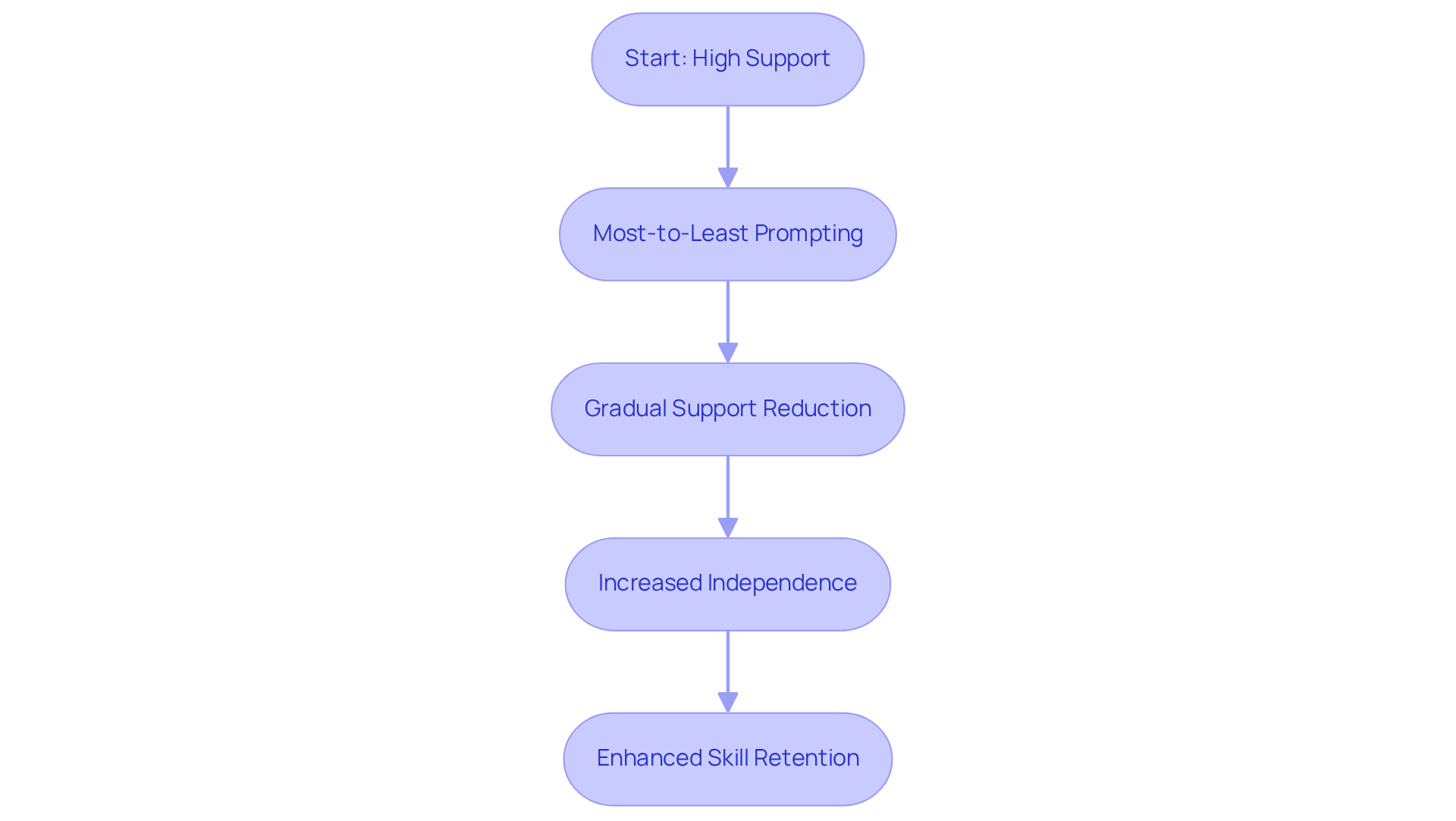
As cues are systematically minimized, students gain the ability to accomplish tasks autonomously, which significantly boosts their confidence. This enhancement in self-efficacy empowers them to embrace new challenges without the fear of failure. Research indicates that successful stimulus reduction leads to greater independence, heightened confidence, lasting skill retention, and decreased reliance on cues for task completion. The gradual diminishing process allows students to internalize their accomplishments, further strengthening their confidence in their own abilities. Such confidence is essential for fostering motivation and encouraging further engagement in learning opportunities.
Consider this: how can we better support our students in achieving autonomy? As one BCBA remarked, 'Developing confidence through gradual assistance is essential for lasting success.' By encouraging autonomy through prompt fading ABA, therapy not only improves ability acquisition but also fosters a resilient mindset in learners, equipping them for future achievements. Practitioners are urged to create a clear withdrawal plan from the beginning of instruction to maximize these benefits.
Are you ready to enhance your practice and empower your students?
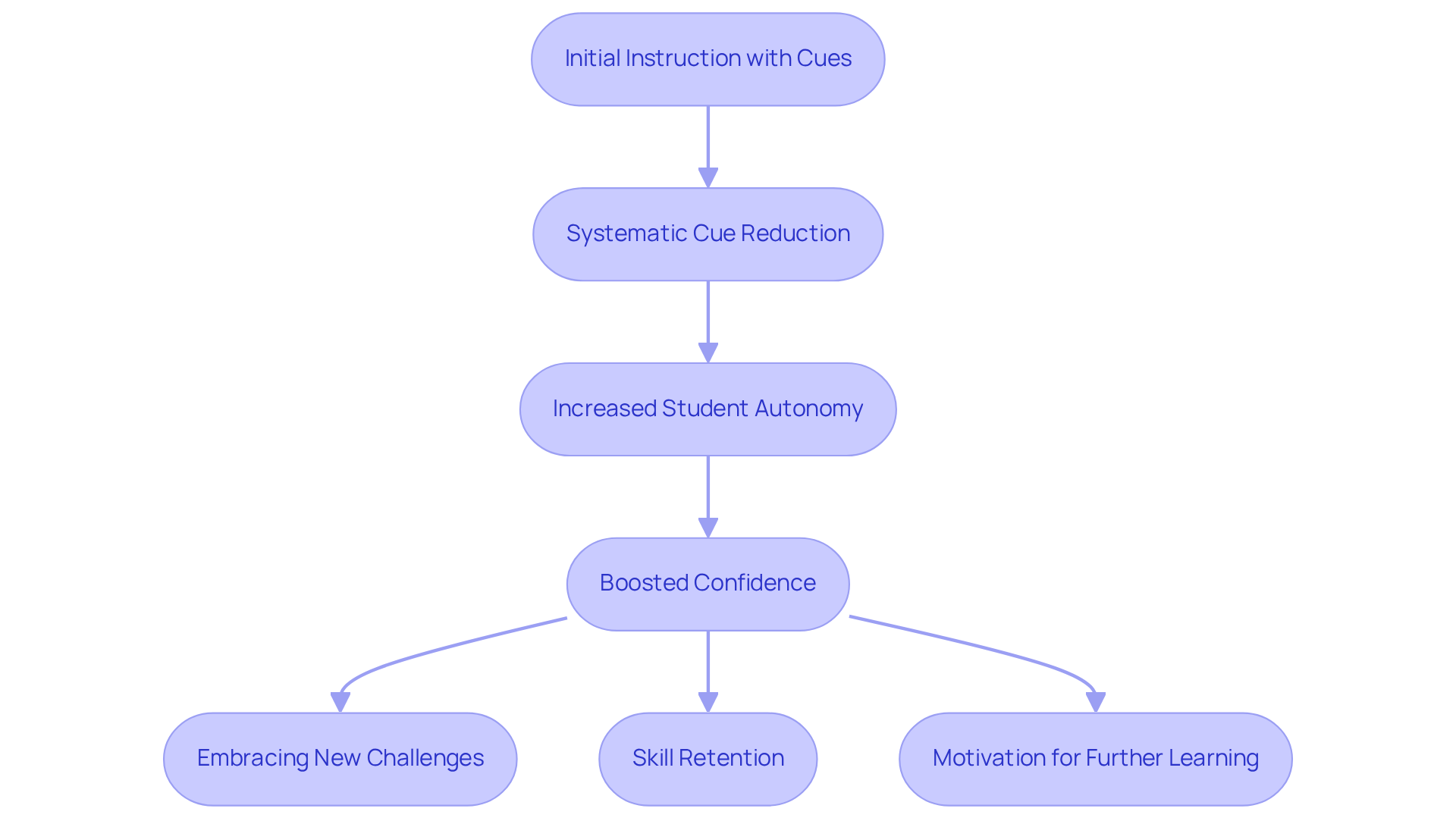
Prompt withdrawal significantly enhances the acquisition of new abilities while playing a crucial role in their long-term retention. By utilizing prompt fading ABA to gradually decrease cues, students are encouraged to rely on their own understanding and skills, thereby improving their capacity to remember and apply learned competencies across various situations.
Research demonstrates that individuals who experience successful gradual withdrawal via prompt fading ABA show markedly better long-term retention of skills compared to those who do not. This approach not only fosters independence but also solidifies the foundation for lifelong learning.
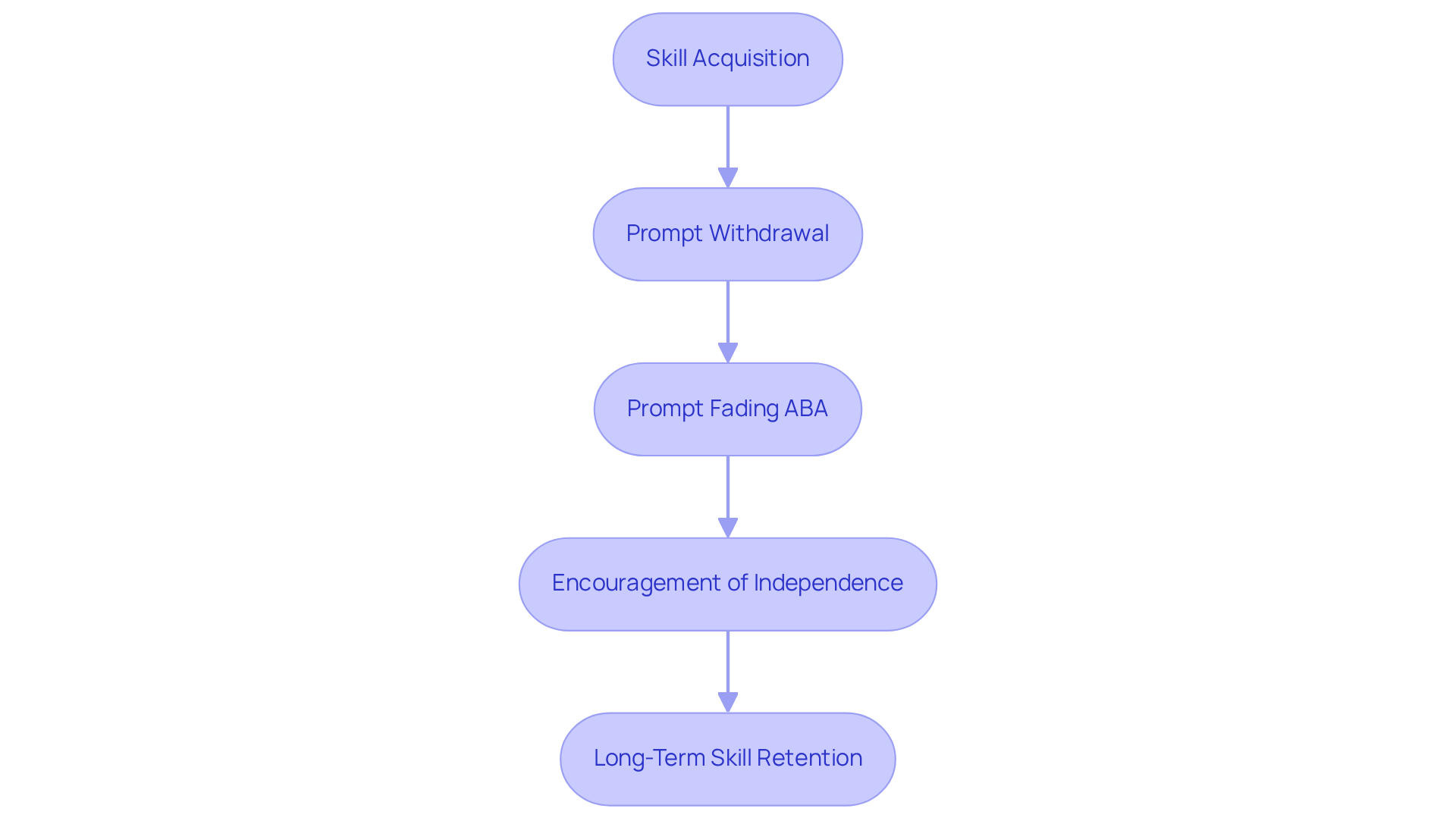
One of the primary objectives of stimulus reduction is to diminish reliance on cues among students. By systematically using prompt fading ABA to decrease the level of assistance, individuals learn to initiate and complete tasks independently. This transition not only fosters independence but also prepares individuals for real-world situations where they must rely on their own capabilities.
Effective strategies for prompt fading ABA, including the Most-to-Least (MTL) and Least-to-Most (LTM) techniques, ensure that learners do not become overly dependent on cues, which can hinder their ability to operate autonomously across various environments. Notably, over 85% of ABA programs implement some form of hierarchy, underscoring the widespread acceptance and effectiveness of these strategies.
Moreover, tracking progress and adjusting cues based on each student's needs through prompt fading ABA is critical for successful execution. Research indicates that initiatives employing consistent data gathering show a 40% improvement in the retention of learned skills, highlighting the effectiveness of structured cue reduction in fostering lasting independence.
To optimize outcomes, practitioners should adopt a systematic approach to data collection and routinely review necessary adjustments.
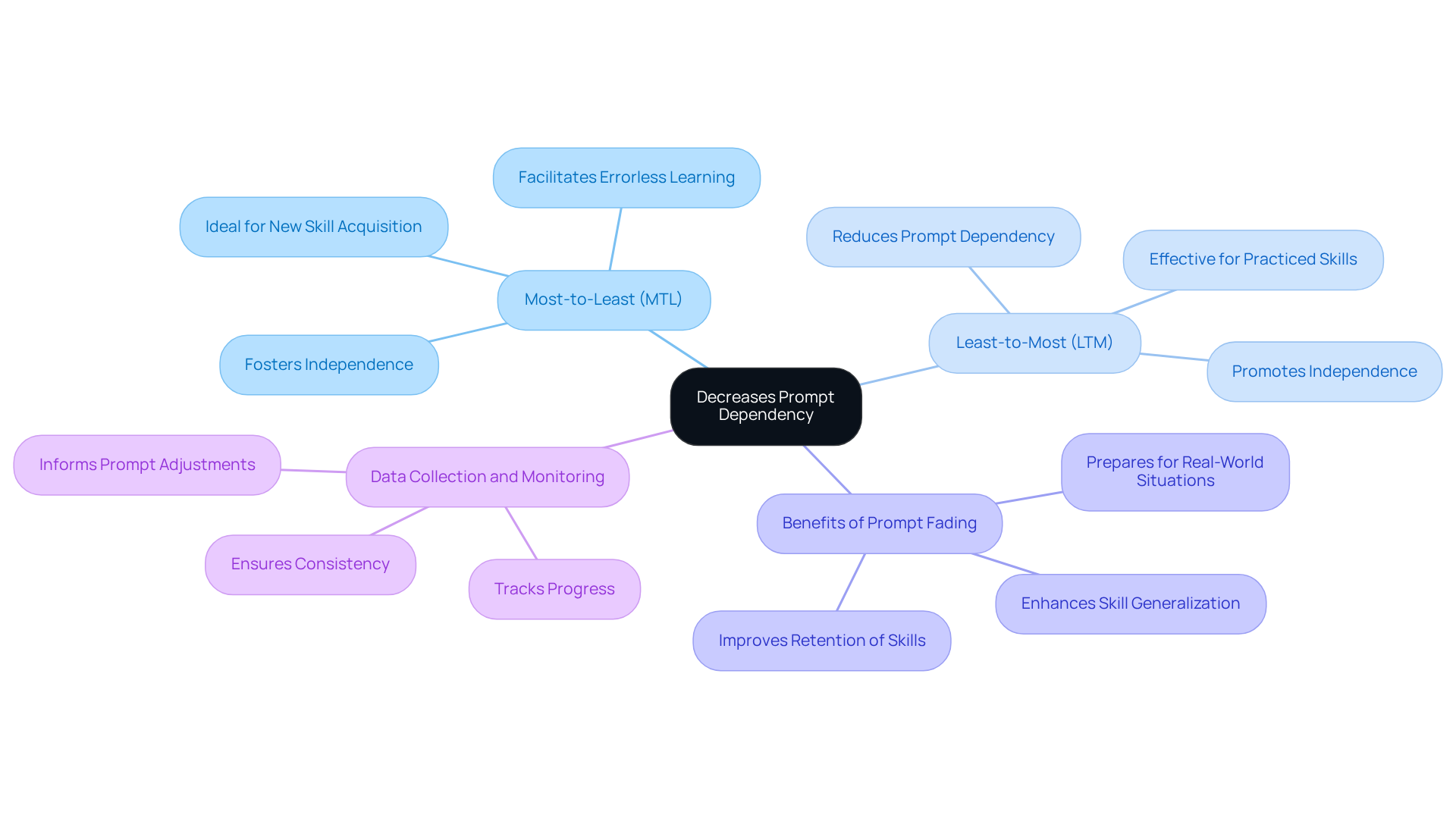
Prompt fading ABA significantly enhances participant engagement by fostering active involvement in the learning process. As prompt fading ABA is systematically implemented, students are encouraged to think critically and solve problems independently. This not only keeps them involved but also invested in their education. Such active involvement transforms the learning experience into a more enjoyable one, strengthening the abilities being taught. Consequently, individuals demonstrate enhanced retention and application of these abilities in real-world scenarios.
Effective strategy reduction techniques, such as Most-to-Least (MTL) and Least-to-Most (LTM) assistance, lead to greater independence and skill generalization. These methods enable individuals to navigate daily tasks without reliance on external cues. By promoting independence through a gradual decrease in support, prompt diminishing not only boosts involvement but also empowers individuals to take charge of their educational journey.
Consistent data gathering is crucial for tracking advancement and implementing necessary modifications. This ensures that the diminishing process is efficient and tailored to individual student needs. Reflect on your current educational strategies: Are they fostering the independence necessary for success? Prompt fading ABA could be the key to unlocking greater engagement and skill mastery.
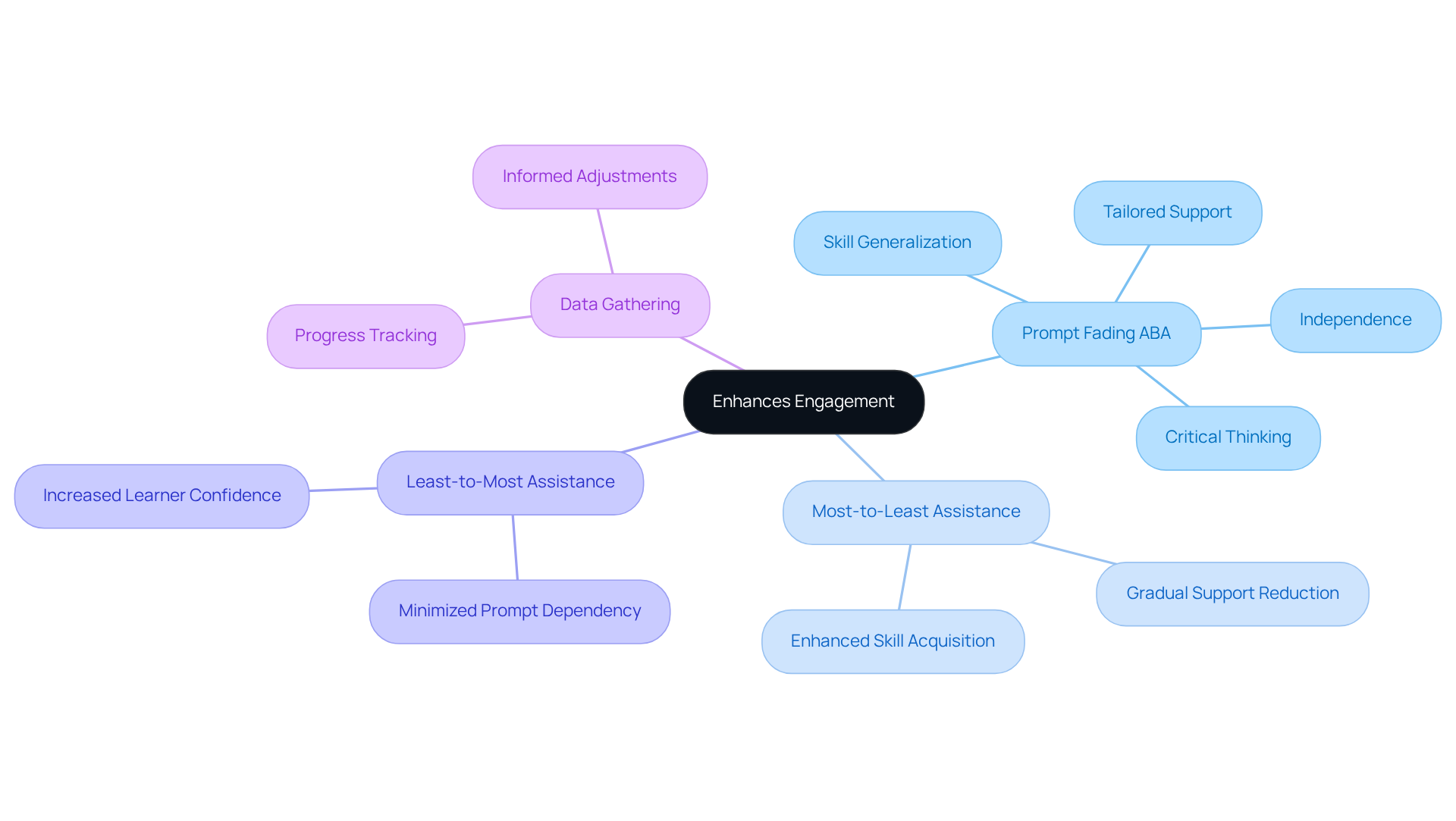
Prompt fading ABA serves as a highly flexible method in ABA therapy, empowering practitioners to tailor strategies according to the unique requirements of each student. Through thorough assessments of a student's strengths and challenges, therapists can pinpoint the most effective methods for prompt fading ABA to implement. This personalized approach not only enhances the intervention's effectiveness but also fosters a supportive environment where students feel understood and valued throughout their educational journey.
To maintain ongoing effectiveness, behavior plans should undergo reviews every 3-6 months. This allows for necessary adjustments that reflect the individual's progress and evolving needs. Given that ABA therapy emphasizes tailored treatment, practitioners must avoid 'cookie cutter' methods, focusing instead on personalized objectives that address each individual's unique circumstances.
Frequent evaluations and modifications of strategies based on individual student needs are crucial for achieving positive outcomes in prompt fading ABA therapy. Are you currently facing challenges in your hiring process? Consider how a tailored approach can transform your recruitment efforts.
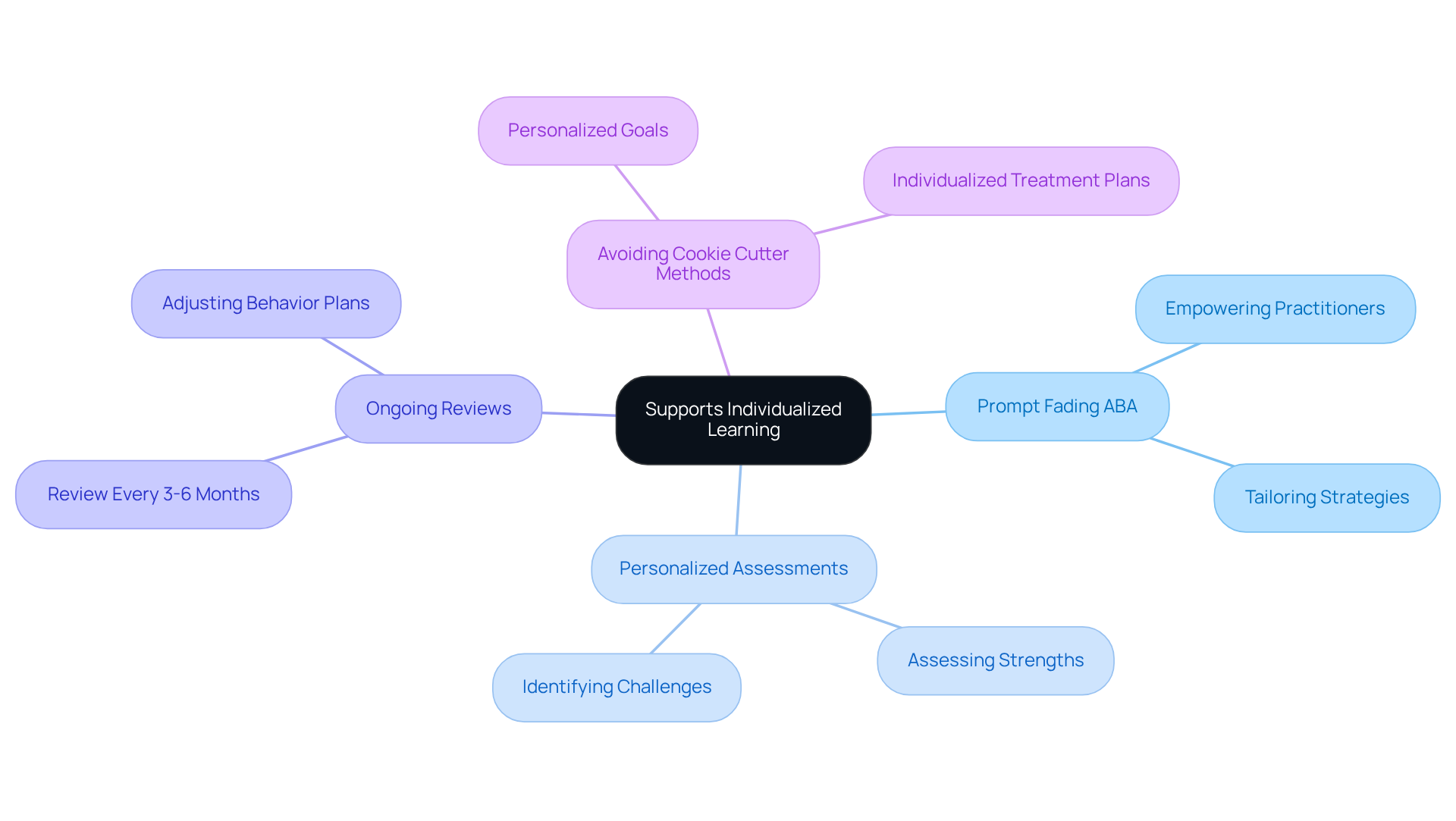
Ongoing data gathering is essential for effective prompt fading ABA therapy, enabling practitioners to accurately monitor student progress. By systematically observing reactions to diminishing cues, therapists can make informed decisions about when to further reduce assistance or when to provide additional support. This data-driven approach not only tailors interventions to the evolving needs of each individual but also enhances the overall effectiveness of prompt fading ABA in therapy.
Research shows that analyzing trends in data is crucial for assessing whether behavior is improving, remaining stable, or regressing, which leads to a deeper understanding of behavior patterns. Moreover, visual representations of data—such as line graphs, bar charts, and scatterplots—facilitate rapid interpretation of trends, enabling therapists to refine strategies in real-time.
Regular quality checks and standardized data collection tools are vital for ensuring data accuracy and reliability, thereby supporting the ethical responsibility of behavior analysts to ensure that interventions are both effective and aligned with the individual goals of each child.
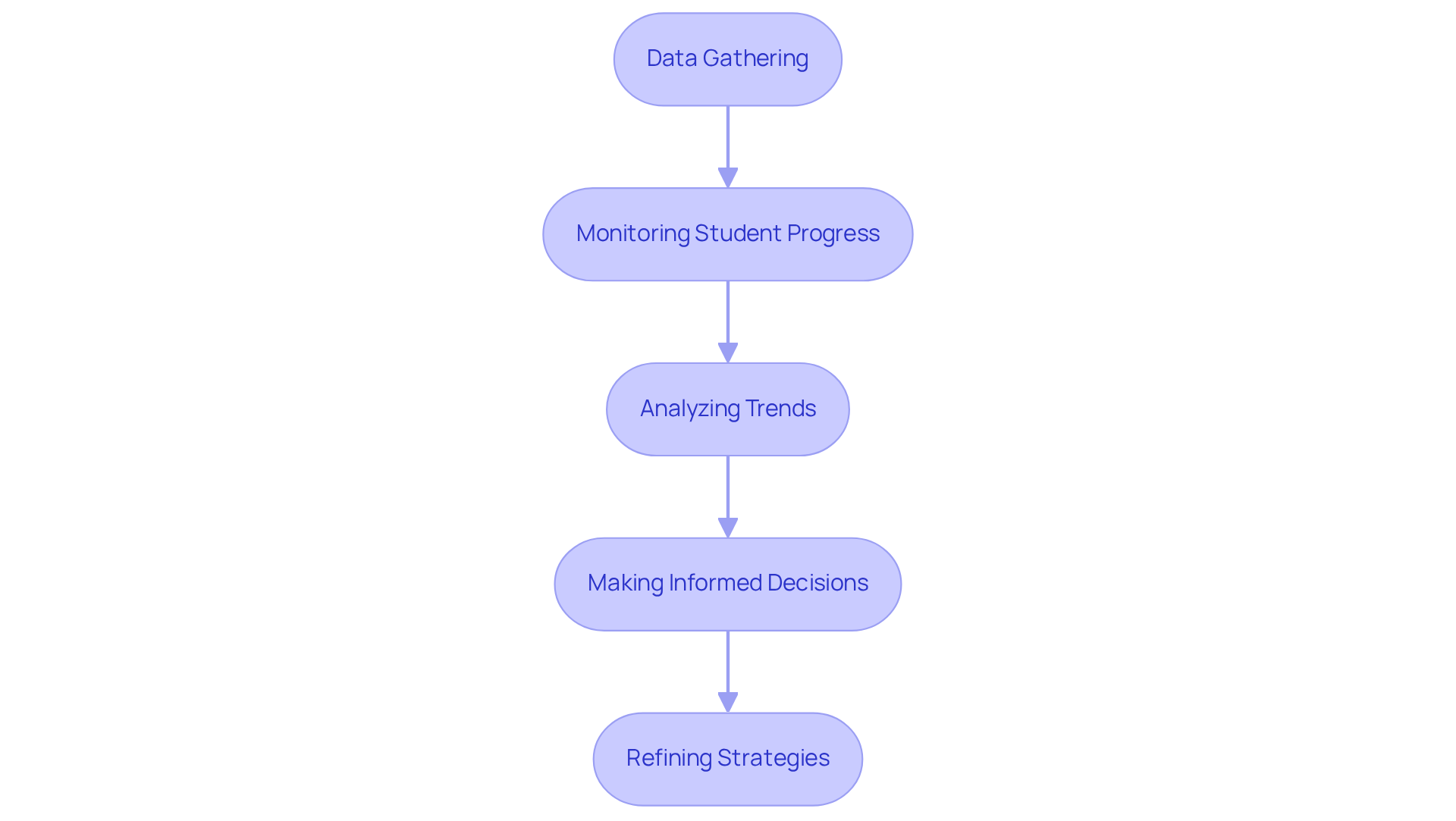
Immediate withdrawal plays a vital role in managing difficult behaviors by systematically decreasing dependence on cues that may inadvertently reinforce those actions. This technique encourages learners to shift their focus from external cues to internal motivation, fostering the development of more appropriate behaviors. As a result, challenging behaviors are diminished, creating a more positive and supportive learning environment for all participants in ABA therapy.
Studies show that when cue reduction is successfully applied, individuals rely less on cues, thereby boosting their confidence and capacity to carry out tasks autonomously. Minimizing reliance on cues is a key objective of prompt fading ABA, which promotes task independence.
Furthermore, ABA therapy boasts an over 89% success rate in treating children with ASD, showcasing the effectiveness of methods such as gradual reduction in achieving improved behavioral outcomes.
To successfully implement prompt fading ABA, practitioners can start by using a most-to-least guidance strategy, gradually reducing support as the student gains confidence and ability.
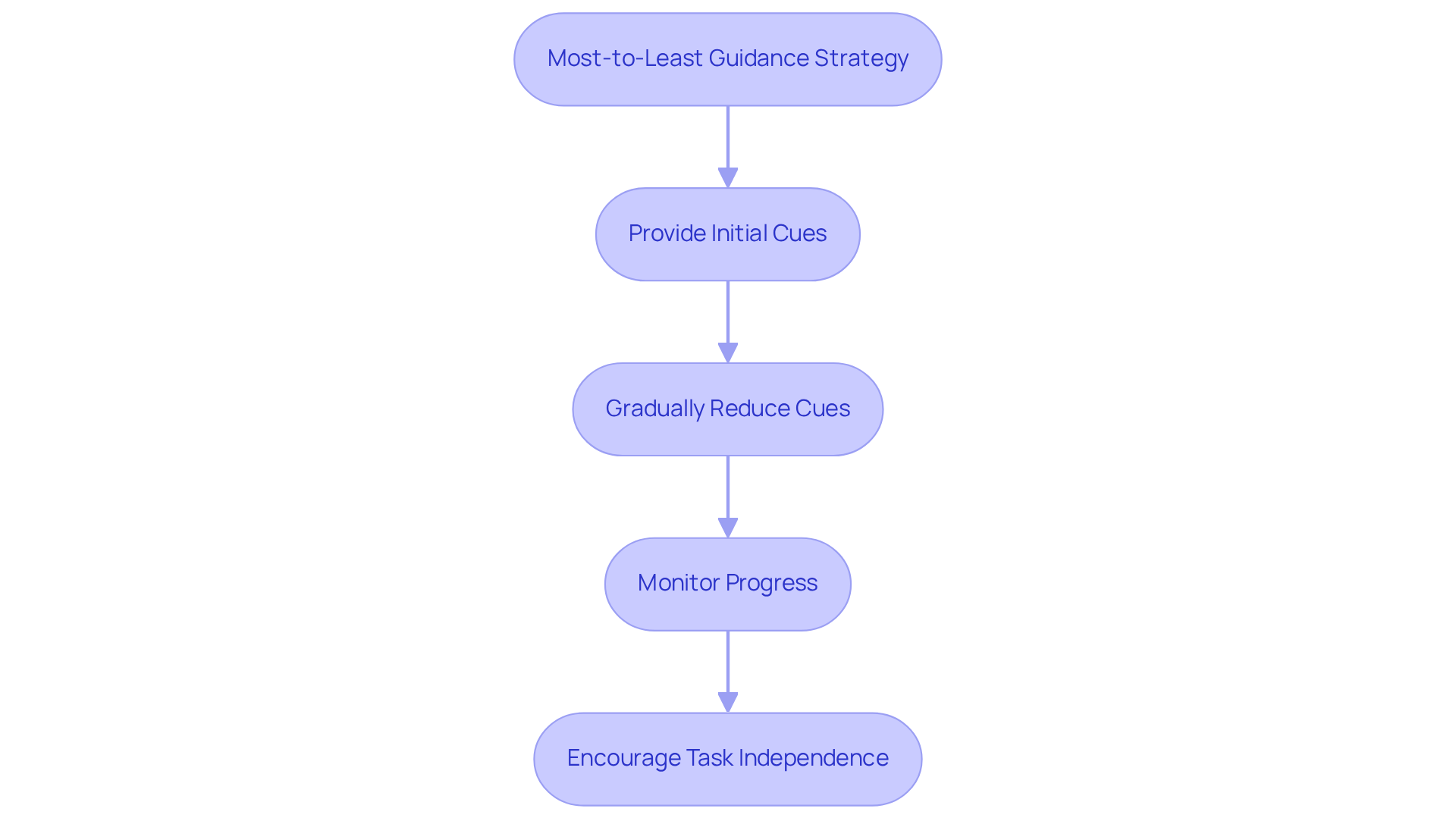
Prompt fading aba is crucial for enhancing communication abilities, empowering learners to articulate their thoughts autonomously. As cues are systematically diminished, individuals are encouraged to use their own language and strategies through prompt fading aba. This not only improves their verbal skills but also cultivates more meaningful social interactions.
Such a methodical approach to prompt fading aba is vital for promoting sustained skill execution without the need for constant reminders. The process significantly boosts learners' confidence, enabling them to interact more effectively with peers and caregivers. Consequently, the organized decrease of cues fosters an environment conducive to social flourishing, thereby enhancing overall communication skills across diverse contexts, including home, school, and community settings.
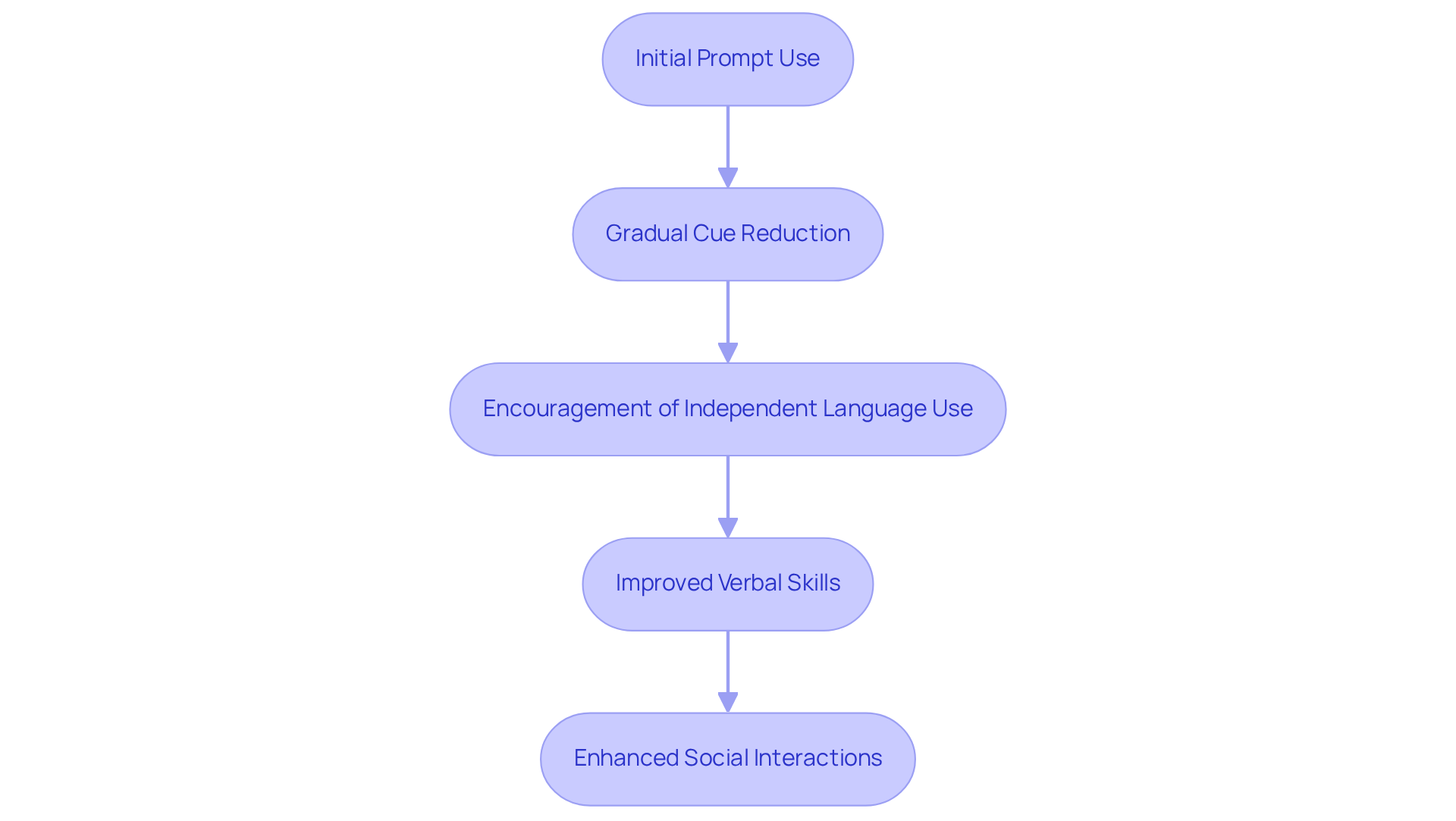
Hire ABA serves as a vital resource for Board Certified Behavior Analysts (BCBAs) who seek to implement effective gradual cue reduction techniques in their practice. By linking practitioners with the latest research, training, and tools, Hire ABA empowers BCBAs to enhance their interventions and improve outcomes for their clients. Access to these resources ensures that professionals are well-equipped to apply the best methods in gradual reduction, ultimately benefiting the students they support.
To further illustrate the effectiveness of gradual reduction, insights from specialists such as Dr. Laura Grow underscore the importance of customized interventions tailored to individual learner needs. Additionally, case studies presented by Beverley Sharpe highlight practical applications of these strategies, demonstrating their impact on skill development and independence.
Incorporating statistics from recent research on Discrete Trial Training (DTT) provides a data-driven perspective on the advantages of cue reduction. For instance, research shows that DTT effectively breaks down skills into manageable steps, leading to improved learning outcomes.
For BCBAs eager to implement prompt fading ABA, a practical suggestion is to start with small, achievable objectives and gradually increase task difficulty as individuals demonstrate proficiency. This method not only nurtures independence but also bolsters confidence in the learners' abilities.
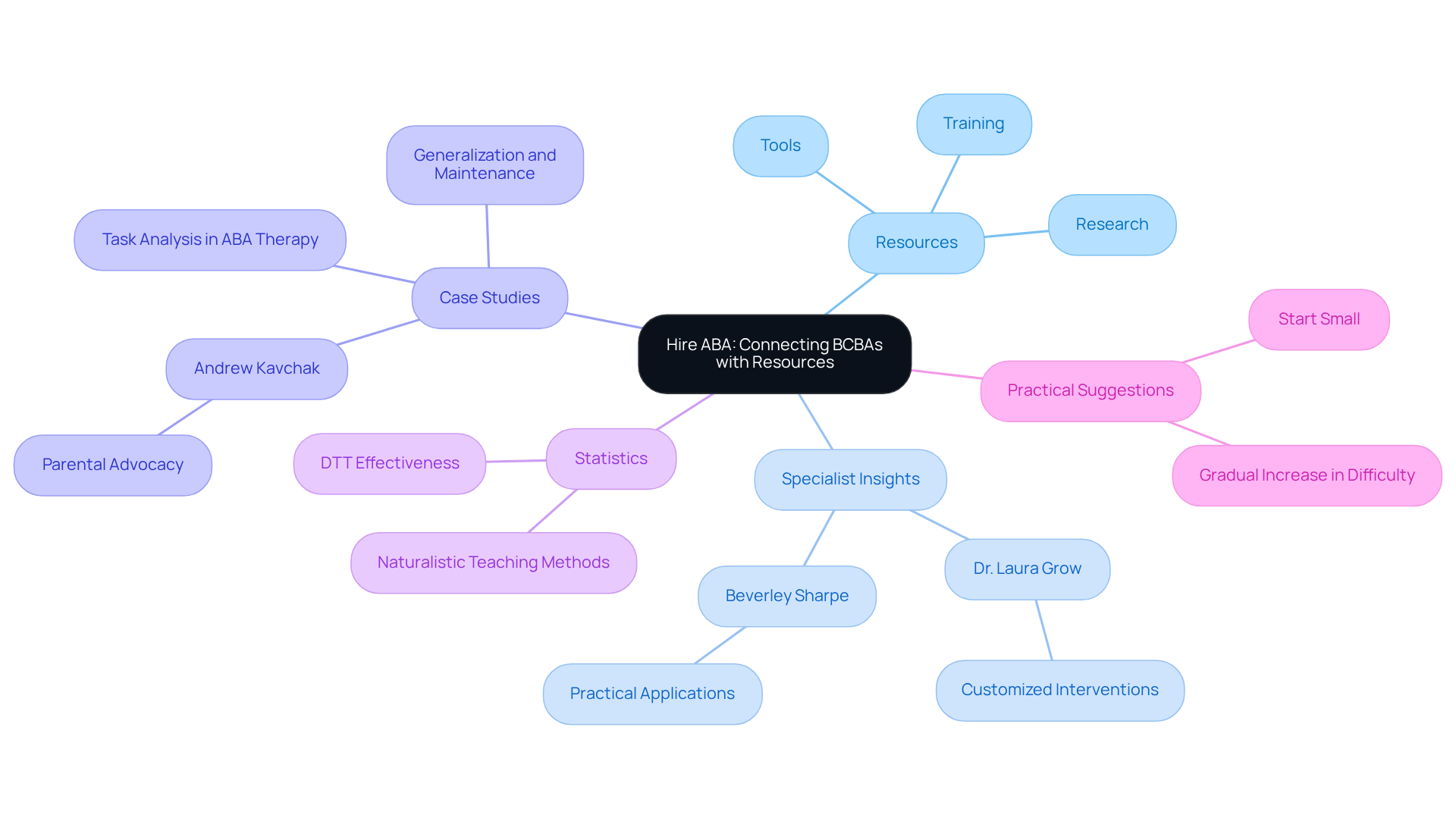
Prompt fading in ABA therapy emerges as a transformative approach that significantly enhances learner independence and skill mastery. By systematically reducing the level of support provided, this method empowers individuals to rely on their own abilities, fostering a sense of autonomy that is crucial for personal development. The structured nature of prompt fading not only promotes independence but also builds confidence, enabling learners to tackle new challenges with a resilient mindset.
Throughout the article, key benefits of prompt fading have been highlighted, including:
Techniques such as Most-to-Least and Least-to-Most prompting are instrumental in ensuring that learners can navigate tasks independently while maintaining engagement in their educational journey. Additionally, the importance of individualized strategies and data-driven decisions has been emphasized, showcasing how tailored approaches lead to more effective outcomes in ABA therapy.
The significance of prompt fading extends beyond mere skill acquisition; it lays the foundation for lifelong learning and personal growth. As practitioners implement these strategies, the focus should be on fostering an environment that encourages autonomy and supports each learner's unique needs. By embracing prompt fading, educators and therapists can unlock greater potential in their students, ultimately leading to more meaningful interactions and improved behavioral outcomes. The call to action is clear: prioritize prompt fading techniques in ABA therapy to cultivate independence and empower learners for success in all aspects of life.
What is prompt fading in ABA?
Prompt fading in ABA is a structured approach that involves the gradual reduction of support provided to learners, encouraging them to rely on their own abilities rather than external cues, which fosters independence and confidence.
How does prompt fading promote independence?
By systematically lowering the level of support, prompt fading allows individuals to gain confidence in their skills, enabling them to manage daily activities with greater autonomy.
What methods are used in prompt fading?
Methods such as Most-to-Least (MTL) prompting, which begins with the most intrusive cues, and Least-to-Most (LTM) prompting, which starts with minimal cues, are effective in adapting to learners' needs and promoting skill development.
What are the benefits of prompt fading in terms of skill retention?
Prompt fading enhances long-term skill retention by encouraging learners to rely on their understanding and skills, leading to better memory and application of learned competencies.
How does prompt fading build learner confidence?
As cues are minimized, students become more capable of completing tasks independently, which boosts their confidence and empowers them to face new challenges without fear of failure.
What role does data collection play in prompt fading?
Consistent data collection on gradual reduction of support can help achieve independence objectives 43% faster, highlighting the importance of methodical monitoring in this practice.
What precautions should be taken when applying prompt fading?
It is crucial to apply prompt fading methods with caution, as reducing support too rapidly can lead to unintended reliance on cues.
Why is developing a withdrawal plan important in prompt fading?
Creating a clear withdrawal plan from the beginning of instruction maximizes the benefits of prompt fading, enhancing learner autonomy and success in skill acquisition.
Our expert recruitment strategies and AI-driven sourcing ensure that you receive top-notch candidates quickly, without compromising on quality. Whether you’re looking for BCBAs, Clinical Directors, or RBTs, we’ve got you covered.